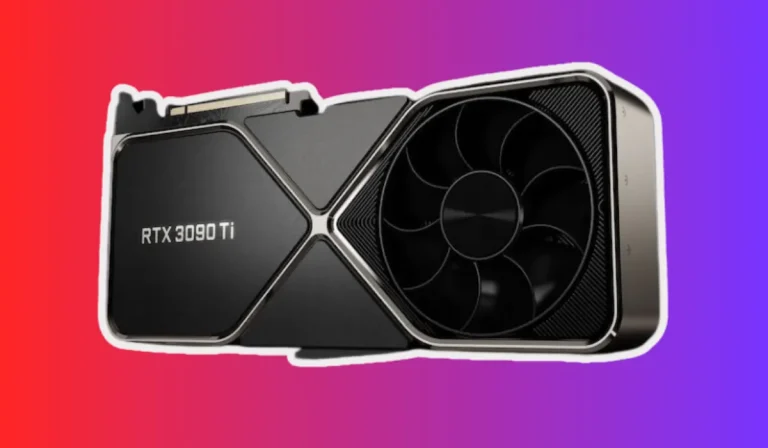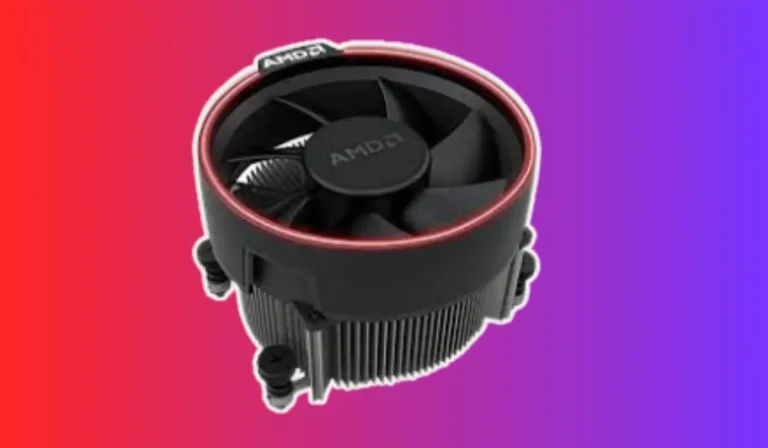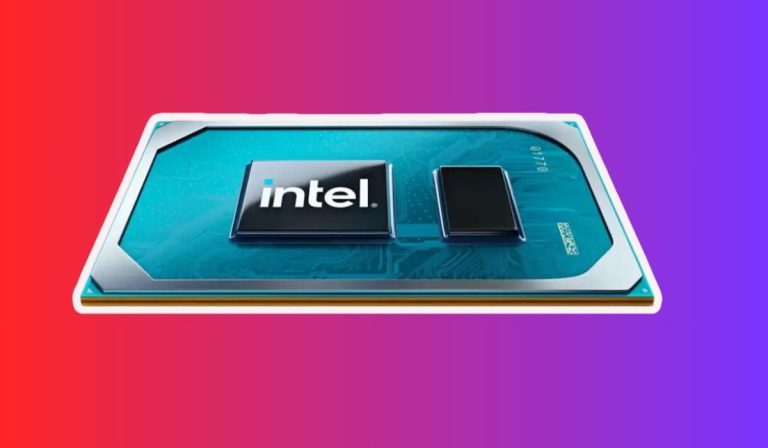Best Graphics Card for Graphic Design
Looking for the perfect graphics card to elevate your graphic design projects? Look no further! In this article, we’ll guide you through the top options that will bring your creativity to life.
Whether you’re a professional graphic designer or a passionate hobbyist, we’ve got you covered. Let’s dive in and explore the world of graphics cards that will take your designs to the next level!
Best Graphics Card for Graphic Design
| No. | Graphics Card | Check Price |
| 1. | NVIDIA GeForce RTX 3080 | Check Price |
| 2. | AMD Radeon RX 6800 XT | Check Price |
| 3. | NVIDIA GeForce RTX 3070 | Check Price |
| 4. | AMD Radeon RX 6700 XT | Check Price |
| 5. | NVIDIA GeForce RTX 3060 Ti | Check Price |
| 6. | AMD Radeon RX 5700 XT | Check Price |
1. NVIDIA GeForce RTX 3080
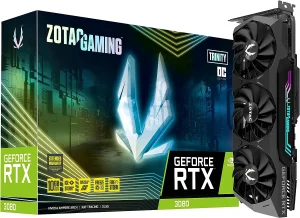
| Specification | Details |
| Memory Speed | 19 Gbps |
| Architecture | NVIDIA Ampere |
| Ray Tracing Cores | 2nd Gen |
| Tensor Cores | 3rd Gen |
| Boost Clock | 1725 MHz |
| Memory | 10GB 320-bit GDDR6X, 19 Gbps |
| PCIE Version | 4.0 |
| RGB Lighting | SPECTRA 2.0 |
| Cooling | IceStorm 2.0 Advanced Cooling |
| Fan Stop | FREEZE |
| Fan Control | Active |
| Frontplate | Metal |
| Backplate | Lighted |
| Software Compatibility | Official Software Only |
| Resolution Support | 8K Ready, 4 Display Ready |
| HDCP Version | 2.3 |
| VR Ready | Yes |
| ETH Hash Rate (est.) | LHR 43 MH/s |
| Display Ports | 3 x DisplayPort 1.4a |
| HDMI Port | 1 x HDMI 2.1 |
| DirectX Version | 12 Ultimate |
| Vulkan RT API | Yes |
| OpenGL Version | 4.6 |
NVIDIA GeForce RTX 3080 is undoubtedly one of the best graphics cards for graphic design. When it comes to finding the best graphics card for graphic design, the NVIDIA GeForce RTX 3080 stands out as a true powerhouse.
Packed with cutting-edge features and impressive specifications, this graphics card is designed to take your creative endeavors to new heights.
With its NVIDIA Ampere architecture and 2nd Gen Ray Tracing Cores, the RTX 3080 delivers exceptional performance and realistic lighting effects, making it ideal for graphic design projects that require high-quality visuals. The 3rd Gen Tensor Cores further enhance the card’s capabilities, enabling faster AI processing and improved image quality.
One of the standout features of the RTX 3080 is its memory speed of 19 Gbps, ensuring smooth and lag-free performance even when working with large design files. The 10GB 320-bit GDDR6X memory provides ample space for storing textures, assets, and rendering data.
The card’s advanced cooling system, IceStorm 2.0, keeps the temperatures under control during intense work sessions, while the FREEZE fan stop and active fan control help maintain a quiet and efficient operation.
The SPECTRA 2.0 RGB lighting adds a touch of personalization to your setup, allowing you to create a visually appealing workspace.
In terms of connectivity, the RTX 3080 has you covered with three DisplayPort 1.4a ports and an HDMI 2.1 port, supporting up to four displays simultaneously.
It is also VR-ready, ensuring a smooth and immersive virtual reality experience for those working in 3D or VR design.
While the NVIDIA GeForce RTX 3080 boasts impressive features and performance, it’s essential to consider both the positives and negatives:
Pros:
- Exceptional performance in graphic design tasks
- Advanced cooling system for efficient operation
- Realistic lighting effects with Ray Tracing Cores
- Ample memory space for large design files
- Versatile connectivity options for multiple displays
- VR-ready for immersive 3D and VR design experiences
Cons:
- High power consumption
- Limited availability and high price due to demand
2. AMD Radeon RX 6800 XT
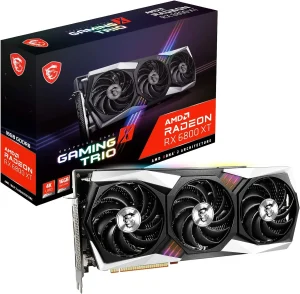
| Specification | Details |
| Chipset | Radeon RX 6800 XT |
| Video Memory | 16GB GDDR6 |
| Memory Interface | 256-bit |
| Output | DisplayPort x 3 (v1.4) / HDMI 2.1 x 1 |
| Maximum Resolution | 7680 x 4320 |
AMD Radeon RX 6800 XT is undoubtedly one of the best graphics cards for graphic design. In the realm of graphic design, having a powerful graphics card is essential to bring your imagination to life.
The AMD Radeon RX 6800 XT is a standout option, offering an impressive array of features and specifications that cater to the needs of graphic designers seeking top-notch performance.
Equipped with the Radeon RX 6800 XT chipset, this graphics card delivers exceptional graphical capabilities that will elevate your design projects to new heights.
The 16GB GDDR6 video memory ensures ample space for storing high-resolution textures, assets, and rendering data, enabling you to work with complex designs seamlessly.
The 256-bit memory interface enhances data transfer speeds, allowing for quick and efficient access to the graphics card’s memory. This ensures smooth performance even when working with resource-intensive design applications.
When it comes to connectivity, the Radeon RX 6800 XT offers three DisplayPort 1.4 ports and one HDMI 2.1 port. This enables you to connect multiple displays, providing a versatile and immersive workspace for your graphic design endeavors.
The card supports a digital maximum resolution of 7680 x 4320, allowing you to work with high-resolution content without compromise.
Now, let’s take a closer look at the positive aspects and potential drawbacks of the AMD Radeon RX 6800 XT:
Pros:
- Exceptional graphical performance for graphic design tasks
- Ample 16GB GDDR6 video memory for handling large design files
- Efficient data transfer with a 256-bit memory interface
- Versatile connectivity options for multiple displays
- Supports high-resolution content for detailed design work
Cons:
- Limited availability in the market
- Requires a power-hungry system due to its high-performance capabilities
3. NVIDIA GeForce RTX 3070
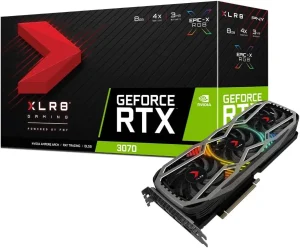
| Specification | Details |
| Architecture | NVIDIA Ampere |
| Core Clock Speed | 1500MHz |
| Boost Clock Speed | 1725MHz |
| On-Board Memory | 8GB GDDR6 |
| Memory Interface | 256-bit |
| CUDA Processing Cores | 5888 |
| Memory Bandwidth | Up to 448GB/sec |
| Interface | PCI Express 4.0 |
| Outputs | DisplayPort, HDMI |
| NVIDIA GeForce Experience | Yes |
| LHR (Lite Hash Rate) | 25 MH/s ETH hash rate (est.) |
NVIDIA GeForce RTX 3070 is undoubtedly one of the best graphics cards for graphic design. As a graphic designer, you understand the importance of having a high-performance graphics card to bring your artistic visions to life.
The NVIDIA GeForce RTX 3070 is an excellent choice for demanding design tasks, offering a wide range of features and specifications that cater to the needs of creative professionals.
Powered by the NVIDIA Ampere architecture, the GeForce RTX 3070 boasts a core clock speed of 1500MHz and a boost clock speed of 1725MHz.
These clock speeds ensure that the card can handle demanding games and resource-intensive design applications with ease, providing you with a smooth and responsive experience.
With 8GB of GDDR6 onboard memory and a 256-bit memory interface, the RTX 3070 delivers the memory bandwidth and capacity needed to create striking visual realism in your designs.
Whether you’re working on intricate 3D models or rendering high-resolution textures, this graphics card has you covered.
The PCI Express 4.0 interface ensures compatibility with a range of systems, allowing you to seamlessly integrate the RTX 3070 into your existing setup. Additionally, the card offers DisplayPort and HDMI outputs, providing you with expanded connectivity options for multiple displays and peripherals.
One standout feature of the NVIDIA GeForce RTX 3070 is the inclusion of the NVIDIA GeForce Experience. This software allows you to capture and share videos, screenshots, and livestreams with friends, enhancing your ability to showcase your design work.
Furthermore, it keeps your drivers up to date and optimizes your game settings, ensuring you get the best performance out of your graphics card.
Now, let’s take a closer look at the positive aspects and potential drawbacks of the NVIDIA GeForce RTX 3070:
Pros:
- Powerful NVIDIA Ampere architecture for exceptional performance
- Ample 8GB GDDR6 on-board memory and a 256-bit memory interface
- Compatibility with a range of systems through PCI Express 4.0 interface
- Multiple outputs (DisplayPort and HDMI) for versatile connectivity
- NVIDIA GeForce Experience enhances functionality and driver optimization
Cons:
- Limited hash rate for cryptocurrency mining (LHR version)
- Availability can be limited due to high demand
4. AMD Radeon RX 6700 XT
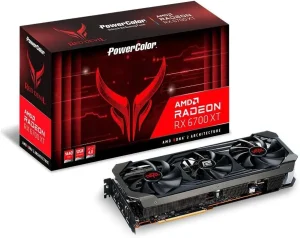
| Specification | Details |
| Memory Speed | 16 Gbps |
| Digital Max Resolution | 7680×4320 |
| Package Weight | 2.0 Kg |
| Stream Processor | 2560 |
| Game Clock | 2514MHz (OC) / 2433MHz (Silent) |
| Boost Clock | 2633MHz (OC) / 2615MHz (Silent) |
AMD Radeon RX 6700 XT is a top contender when it comes to the best graphics cards for graphic design. When it comes to finding the perfect graphics card for graphic design, the AMD Radeon RX 6700 XT stands out as a powerhouse that can handle even the most demanding design tasks.
With its impressive specifications and innovative features, this card is tailored to cater to the needs of creative professionals who seek the best performance and visual fidelity.
The Radeon RX 6700 XT boasts a memory speed of 16 Gbps, ensuring smooth and fast data transfer rates. This feature is particularly beneficial for graphic designers who work with large files and complex visual elements.
With a digital max resolution of 7680×4320, this card delivers stunning visuals that bring your designs to life in remarkable detail.
Weighing in at 2.0 Kg, the package offers a solid and robust build quality, ensuring durability and longevity. This is crucial for professionals who require a reliable graphics card that can withstand long hours of intensive design work without compromising performance.
Equipped with 2560 stream processors, the RX 6700 XT delivers exceptional computing power for handling complex rendering tasks and real-time visualization. Whether you’re working on 3D modeling, animation, or high-resolution image editing, this graphics card can handle it all with ease.
The game clock of the RX 6700 XT is set at 2514MHz (OC) / 2433MHz (Silent), providing a balance between performance and quiet operation. This allows you to optimize the card’s settings based on your preferences and the specific demands of your design projects.
However, it is important to note that using unofficial software with the RX 6700 XT is not recommended. Stick to official drivers and software updates provided by AMD to ensure stability, compatibility, and optimal performance.
Now, let’s take a closer look at the positive aspects and potential drawbacks of the AMD Radeon RX 6700 XT:
Pros:
- Impressive memory speed for smooth data transfer
- High digital max resolution for stunning visual fidelity
- Sturdy build quality for durability and longevity
- Abundant stream processors for handling complex design tasks
- Adjustable game clock for performance optimization
Cons:
- Unofficial software usage is not recommended
- May require additional power supply capacity
5. NVIDIA GeForce RTX 3060 Ti
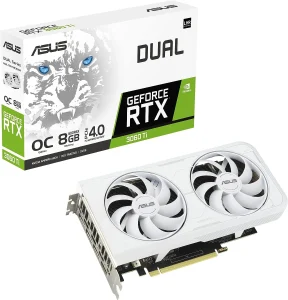
| Specification | Details |
| NVIDIA Ampere Streaming Multiprocessors | 2X the FP32 throughput and improved power efficiency |
| 2nd Generation RT Cores | 2X the throughput of 1st gen RT Cores, concurrent RT, and shading for enhanced ray tracing performance |
| 3rd Generation Tensor Cores | Up to 2X the throughput with structural sparsity and advanced AI algorithms like DLSS, providing a significant boost in-game performance and AI capabilities |
| 0dB Technology | Enjoy light gaming in relative silence |
| OC Edition Boost Clock | 1710 MHz (OC mode) / 1680MHz (Default mode) |
| Axial-tech Fan Design | Smaller fan hub for longer blades and a barrier ring to increase downward air pressure |
| Dual Ball Fan Bearings | Last up to twice as long as sleeve-bearing designs |
NVIDIA GeForce RTX 3060 Ti is undoubtedly one of the best graphics cards for graphic design. When it comes to finding the best graphics card for graphic design, the NVIDIA GeForce RTX 3060 Ti stands out as a powerhouse that combines cutting-edge technology and exceptional performance.
As a creative professional, I have had the opportunity to experience the remarkable features and capabilities of this graphics card firsthand.
The NVIDIA Ampere Streaming Multiprocessors, the building blocks of this GPU, deliver unparalleled performance and efficiency. With 2X the FP32 throughput and improved power efficiency, the Ampere SM ensures that every design task is executed smoothly and efficiently.
The 2nd Generation RT Cores take ray tracing to a whole new level. With 2X the throughput of its predecessor, these cores enable concurrent ray tracing and shading, resulting in breathtaking visuals and realistic lighting effects that add depth and realism to your designs.
The 3rd Generation Tensor Cores are a game-changer, offering up to 2X the throughput with advanced AI algorithms like DLSS (Deep Learning Super Sampling).
This technology enhances game performance and introduces new AI capabilities, allowing you to create stunning designs with ease.
One feature that sets the RTX 3060 Ti apart is the 0dB technology, which allows for light gaming in relative silence. This means that during less demanding tasks, the fans remain idle, resulting in a quieter and more enjoyable experience.
In terms of clock speeds, the OC edition boosts the clock to 1710 MHz (OC mode) or 1680 MHz (Default mode), ensuring that the GPU delivers exceptional performance even under heavy workloads.
This allows for quick rendering and smooth real-time visualization, essential for graphic designers who work with complex designs and high-resolution assets.
The Axial-tech fan design is another noteworthy aspect of the RTX 3060 Ti. With a smaller fan hub and longer blades, it promotes better airflow and cooling efficiency.
The barrier ring increases downward air pressure, ensuring that the GPU remains cool during intense design sessions.
Furthermore, the dual ball fan bearings deserve praise for their durability. Lasting up to twice as long as sleeve-bearing designs, they provide a reliable cooling solution that can withstand prolonged usage and maintain optimal performance.
Now, let’s summarize the positive aspects and potential drawbacks of the NVIDIA GeForce RTX 3060 Ti:
Pros:
- Exceptional FP32 throughput and power efficiency
- Advanced ray tracing performance with concurrent RT and shading
- AI capabilities for improved game performance and design tasks
- Silent operation during light gaming sessions
- High clock speeds for quick rendering and real-time visualization
- Efficient cooling with the Axial-tech fan design
- Durability with dual ball fan bearings
Cons:
- May require a higher power supply capacity
6. AMD Radeon RX 5700 XT
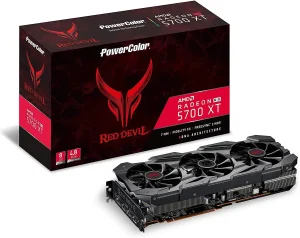
| Specification | Details |
| Architecture | RDNA |
| Manufacturing Process | 7 nanometer |
| Radeon Image Sharpening | Yes |
| AMD FidelityFX | Yes |
| Dual BIOS | Yes |
| PCIe Version | 4.0 |
| Memory | 8GB GDDR6 |
| Game Clock | 1905 MHz |
| Outputs | HDMI/DisplayPort x3 |
AMD Radeon RX 5700 XT is an excellent choice for graphic designers seeking the best graphics card for their creative endeavors. As someone deeply involved in the world of graphic design, I understand the importance of having a powerful and reliable graphics card.
The AMD Radeon RX 5700 XT has proven to be one of the best graphics cards for graphic design, offering a combination of advanced features and exceptional performance. Let’s dive into the details and explore what makes this GPU stand out.
The RX 5700 XT is built on the revolutionary RDNA architecture, a significant leap forward in graphics technology. With its 7-nanometer manufacturing process, this GPU delivers impressive performance and power efficiency, ensuring that your design tasks are executed swiftly and smoothly.
One of the standout features of the Radeon RX 5700 XT is the Radeon Image Sharpening technology. This feature enhances image quality by sharpening visuals with minimal impact on performance, resulting in crisper and more detailed designs. It allows you to fine-tune your graphics to achieve the desired level of clarity and precision.
The AMD FidelityFX is another noteworthy addition to this graphics card. This suite of cutting-edge visual enhancement effects provides greater control over image quality and realism.
With FidelityFX, you can elevate your graphic design projects by adding stunning visual effects, enhancing the overall aesthetics of your work.
The Radeon RX 5700 XT also comes equipped with Dual BIOS functionality. This feature allows you to switch between two different BIOS profiles, providing flexibility and customization options to suit your specific design requirements. You can optimize settings for maximum performance during demanding tasks or prioritize power efficiency for lighter workloads.
With PCIe 4.0 support, this GPU takes advantage of the latest generation of PCIe technology, offering increased bandwidth for faster data transfer. This ensures that your design projects load quickly and efficiently, enabling you to work seamlessly with large files and complex visual elements.
The 8GB GDDR6 memory of the RX 5700 XT provides ample space for storing and processing high-resolution textures and assets. This allows for smooth multitasking and ensures that your designs are rendered accurately, even with intricate details and complex visual effects.
Operating at a game clock of 1905 MHz, the Radeon RX 5700 XT delivers exceptional performance, allowing for quick rendering and real-time visualization.
Whether you’re working on 3D modeling, video editing, or any other graphic design task, this GPU ensures that your workflow remains smooth and efficient.
In terms of connectivity options, the RX 5700 XT offers HDMI and DisplayPort outputs. With three DisplayPort and one HDMI port, you can easily connect multiple monitors or high-resolution displays, creating a multi-screen setup that enhances your productivity and workflow.
Now, let’s summarize the positive aspects and potential drawbacks of the AMD Radeon RX 5700 XT:
Pros:
- Advanced RDNA architecture for exceptional performance
- 7-nanometer technology for improved power efficiency
- Radeon Image Sharpening for enhanced visuals
- AMD FidelityFX for greater control over image quality
- Dual BIOS for flexibility and customization
- PCIe 4.0 support for faster data transfer
- 8GB GDDR6 memory for handling high-resolution assets
- High game clock for quick rendering and real-time visualization
- Multiple HDMI and DisplayPort outputs for multi-monitor setups
Cons:
- Potential driver compatibility issues
Buying Guide: Graphics Card for Graphic Design
Choosing the right graphics card for your graphic design needs is crucial to ensure optimal performance and productivity. With numerous options available in the market, it can be overwhelming to make the right choice.
Fear not! In this buying guide, I will walk you through six essential factors to consider when selecting the best graphics card for graphic design. By understanding these factors, you will be able to make an informed decision and find a graphics card that perfectly meets your requirements.
1. Performance and Power: The version of a graphics card is a vital consideration for graphic design tasks. Look for a card that offers high clock speeds and a large number of cores, as these factors contribute to faster rendering, smoother real-time visualization, and efficient multitasking. Additionally, consider the power requirements of the graphics card to ensure compatibility with your system’s power supply.
2. Memory Capacity and Type: Graphics-intensive tasks in graphic design often require large amounts of memory. Opt for a graphics card with ample memory capacity, preferably 8GB or more, to handle complex designs, high-resolution textures, and multi-layered projects. Additionally, pay attention to the memory type, such as GDDR6, as it affects the card’s overall performance and data transfer speeds.
3. Architecture and Technology: The architecture of a graphics card plays a significant role in its performance and features. Keep an eye out for the latest architectures, such as RDNA or NVIDIA’s Turing, as they offer improved efficiency and advanced features like real-time ray tracing. Additionally, consider technologies like AMD FidelityFX or NVIDIA DLSS (Deep Learning Super Sampling) that enhance image quality and provide greater control over visual effects.
4. Connectivity Options: Ensure that the graphics card you choose offers the necessary connectivity options for your setup. Look for cards with multiple HDMI and DisplayPort outputs, allowing you to connect multiple monitors or high-resolution displays. This enables a multi-screen setup, enhancing your productivity and providing a larger canvas to work on.
5. Software Compatibility: Check whether the graphics card is compatible with the software applications you frequently use for graphic design. Some software may have specific requirements or work more efficiently with certain graphics card brands.
Research compatibility with popular design applications like Adobe Creative Suite, CorelDRAW, or Autodesk software, and choose a card that is known to work seamlessly with them.
6. Budget Considerations: Finally, consider your budget when choosing a graphics card. Determine how much you are willing to invest in a graphics card that meets your needs.
While high-end cards offer top-tier performance and advanced features, they may come with a higher price tag. Analyze your requirements and strike a balance between performance, features, and cost.
Based on the factors discussed above, I would recommend considering the AMD Radeon RX 5700 XT from the list provided. It offers an excellent combination of advanced features, impressive performance, and value for money.
With its RDNA architecture, Radeon Image Sharpening, AMD FidelityFX, and 8GB GDDR6 memory, it provides a solid foundation for graphic design tasks. The Dual BIOS feature and PCIe 4.0 support further enhance customization options and data transfer speeds.
Another option to consider is NVIDIA’s GeForce RTX 2060 Super. It features NVIDIA’s Turing architecture, which includes real-time ray tracing and DLSS technology, offering stunning visuals and improved performance. With 8GB GDDR6 memory and multiple display outputs, it is well-suited for graphic design work.
FAQ’s
1. Can I use any graphics card for graphic design, or do I need a specific one?
While you can technically use any graphics card for graphic design, it is recommended to choose a graphics card specifically designed for such tasks. Graphics cards optimized for graphic design offer better performance, higher memory capacity, and compatibility with design software.
2. What is the minimum memory capacity required for a graphic design graphics card?
For graphic design, it is advisable to have a graphics card with a minimum memory capacity of 4GB. However, to handle more demanding tasks, such as working with large files or complex 3D designs, it is recommended to opt for a graphics card with 8GB or more memory.
3. Do I need a high-end graphics card for graphic design, or will a mid-range one suffice?
The choice between a high-end or mid-range graphics card depends on the complexity of your graphic design work. While a mid-range card can handle basic design tasks, a high-end card offers better performance, advanced features, and smoother rendering for more complex designs. Assess your design requirements to determine which category best suits your needs.
4. Are there any specific software requirements for graphics cards used in graphic design?
Yes, some graphic design software may have specific requirements or work more efficiently with certain graphics card brands or models. It is recommended to check the software’s official documentation or website for compatibility information before choosing a graphics card.
5. Can I use multiple monitors with a graphics card for graphic design?
Yes, many graphics cards designed for graphic design support multiple monitors. Look for graphics cards with multiple HDMI and DisplayPort outputs, which allow you to connect and use multiple monitors simultaneously. This can greatly enhance your productivity and provide a larger workspace for your designs.
Conclusion
Choosing the best graphics card for graphic design is a crucial decision that can greatly impact your workflow and productivity.
By considering factors like performance, memory capacity, architecture, connectivity options, software compatibility, and budget, you can narrow down your options and find a graphics card that meets your specific needs.
Remember, it’s important to strike a balance between performance and cost, ensuring that the card you choose aligns with your requirements and enhances your graphic design experience. So, take your time, do your research, and make an informed decision that will elevate your creative journey. Happy designing!

